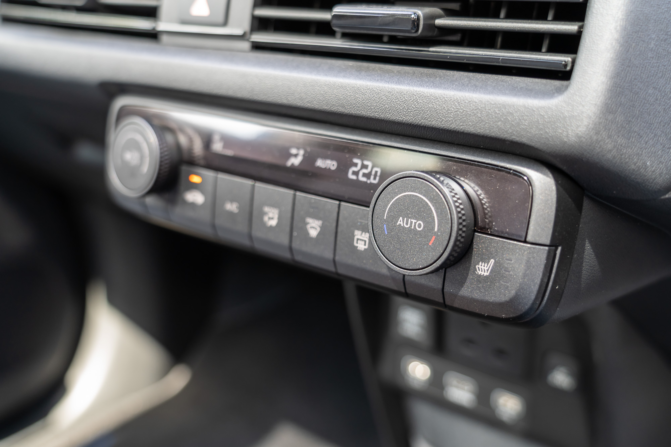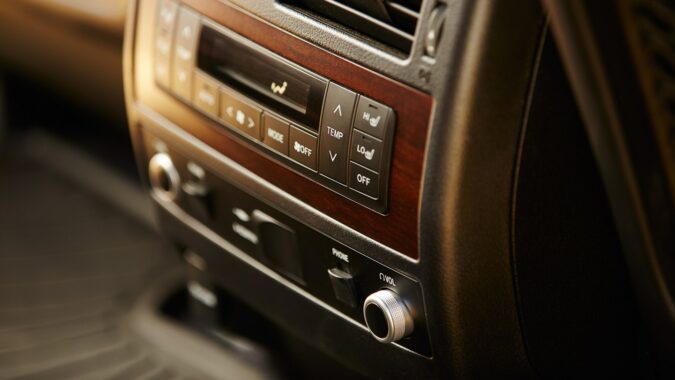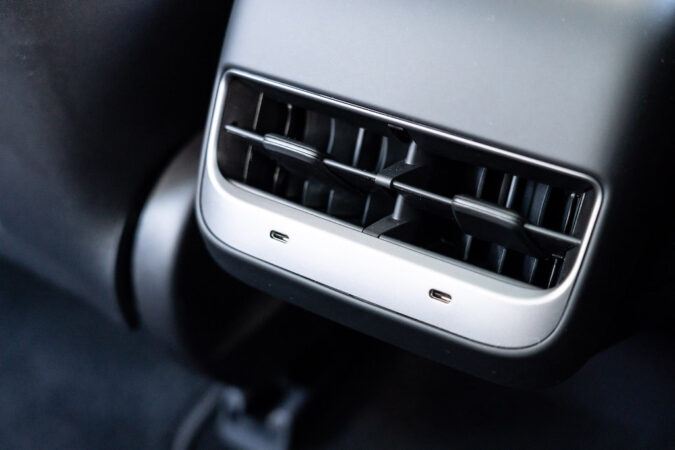When the cold is starting to bite, and it’s getting a tad chilly out, it’s always a good idea to do some pre-winter check-ups on your car. Winter tires, new battery (make sure you’re wary of how much does a car battery cost and how to install a car battery), some antifreeze… But have you spared any thought for a heater core replacement cost? It’s one of the many modern conveniences that we’re able to enjoy, yet don’t often even realize it’s there. Moreover, is it something that we can afford?
Well, the typical heater core replacement cost is one of those items that are particularly pricey to repair and service. But how ‘not cheap’ is it, and why does it matter to get your heater core fixed?
Surely, if it’s just for blowing hot air into your cabin, you can make do without it, right? It turns out that while it may seem merely like a matter of comfort, there’s more to heater cores that we need to know…
- What Is A Heater Core?
- How Does It Work
- Common Problems
- Failure Symptoms
- Replacement Cost
- Final Conclusion
- FAQs
Heater Core
Before we get into the expensive topic of a heater core replacement cost, what exactly is it? Well, to put it simply, your car’s heater core is a reverse radiator. By appearance, it looks like a small radiator block and is used for heating the cabin of a vehicle.
We all know what radiators are, and what it does. By dispersing your hot coolant along a large and finned metal block, it helps to cool it down. As a result, the coolant chills off in the atmosphere and helps to cool your engine. Thus, it prevents the hot internal combustion motor – and its nearby componentry – from overheating.
The heater core does the exact opposite. It employs a radiator-like design, with a metal block that features numerous fins. Here, hot coolant flows through it, and into a winding tube embedded into the heater core.
This is basically a heat exchanger between the coolant, which would be quite hot to the touch, and your would-be chilly cabin air. Then, you have the fins that are attached to the heater core tubes, engineered specifically to increase the surface area for heat transfer.
In other words, it’s similar to how the radiator works up front, by leveraging that increased surface area to cool down the coolant. With the heater core, turning on your heater will force fans to blow the now-warm air exchanged from that hot coolant in the heater core into the cabin (with some tips on how to make AC colder in car).
This is among the reasons why you’re not left shivering and freezing to death in your car when a winter storm sets in. The water pump circulates some of that hot coolant from the engine to be diverted into the heater core.
What Does Heater Core Do
Once again, the heater core is practically a tiny radiator. But rather than lowering the temperature of the coolant, it keeps it hot. Additionally, it disperses that heat over a wide area, for a more effective heating system.
Usually, the heater core sits underneath the dashboard – which is an explanation as to why a heater core replacement cost is so expensive. The tubing is made from brass or aluminum.
Your car’s ventilation system has something called a ‘squirrel cage fan‘. It applies centrifugal force to force air through the heater core, absorbing the heat, and then flowing into your cabin.
When your car’s engine heats up, there’s a thermostat that keeps a close eye on the temperature of the coolant. With this in mind, you can also have control over how hot you want your cabin to be.
There are two ways to control the heater core in most cars…
1. Doors
This is a physical door or flap that closes off the heater core. This blocks a part – or all – of the incoming air from entering the heater core. If you’d like your cabin to not be as warm, you can block a part of the heater core from taking in fresh air to be blown into the cabin.
2. Valves
These valves let you limit – which is to say, increase or decrease – the volume of hot coolant that goes into the heater core. If you want your cabin to be warmer, you can adjust the heater to allow more hot coolant to be diverted into the heater core. And, vice versa.
3. How Do You Control All This
Either the door or the valve can be controlled through a series of knobs, levers, or infotainment. It’s worth noting as well that some cars use a combination of both a door and a valve to manage the heat.
More complex systems that we’re getting acquainted with these days generally utilize a mix of electromechanical actuators and thermistors to control those valves and doors more precisely.
If you’d want to set the temperature by increments of 1°F, this is the high-tech heating system that you’d want. Some cars have dual-zone climate control. These allow for the front driver and passenger to enjoy varying degrees (pun intended) of cooling and heating at their behest.
The driver, for example, may want a bit less heat than the passenger, or vice versa. In this scenario, the heater core has a complex redesign that splits it in two. With this sort of pattern, you can have a different volume of hot coolant flowing through either side of the heater core.
Should you want it, the heater core will direct the subsequent amount of heat to either side of the cabin, as you desired.
4. Does Your Heater Core Affect Your Car’s Cooling
This here is why we touched on the importance of a heater core, regardless of how expensive the heater core replacement cost may be. It actually does have some effects on your car’s engine cooling.
Under regular operations, the heater core siphons off hot coolant from the radiator and exchanges it into hot air for the passenger cabin. Therefore, the heater core in itself is a pseudo-auxiliary radiator.
If let’s say, the radiator doesn’t work properly, you can turn on the heater core to help cool down the engine. When the heater fan is at full speed (and the windows open), the heater core could prevent the engine from overheating for a little while longer.
Granted, the heater core is rather small, so it’s not that effective as a radiator. But in emergencies, it can lower the engine heat by a few degrees.
What Causes Heater Core Problems
So then, it appears as though the heater core is quite a simple system as a whole. Why then, do you need to worry about repairs or a heater core replacement cost? As watertight (also pun intended) as the system might be, more than a few problems could crop up over its lifetime. Hence, it prompts you to take a peek into the heater core, and ponder over what you can do later to have it patched up.
Although, heater cores are generally low-maintenance and robust parts that have a long lifespan. In that case, what are the potential points of failure within a heater core that you should be worrying about?
1. Clogged Tubing
The winds and bends of the heater tubing are designed as such for a reason. Namely, it’s to disperse the flow of hot coolant into as wide of a surface area as possible. Nevertheless, it does have a major downside.
Your car’s coolant needs to be serviced regularly. That is to say, having it flushed and changed out for brand new coolant (with some pointers on how to put antifreeze in your car) once the old one gets a bit too murky. When it reaches past its due date, the coolant can become contaminated due to exposure to debris and moisture.
Over time, a build-up of these particles will be sufficient to clog up the flow of coolant. Among those affected would be the heater core. Those tubes and piping can get clogged up by filthy coolant. Should the heater core be blocked, its heating capacity is reduced, or even lost altogether.
2. Stuck Valves Or Doors
In those cars where it uses control valves that increase or decreases the volume of hot coolant that’s rushed into the coolant, you’ll need to be wary of those valves. As with before, a dirty flow of coolant can clog up those valves, and thus get them stuck in place.
On the flip side, cars that use doors or flaps to limit the airflow into the heater core have their own concerns. The doors, or the mechanism that controls their opening and closing, could get stuck due to thermal expansion. ‘Thermal Expansion‘ is the tendency of matter to expand and contract in size and shape.
If there’s too much heat going into the heater core – likely caused by another failure elsewhere – the intense heat alone is enough to compromise the working of the doors or its mechanism.
3. Connection Leaks
The heater core has numerous connections where hot coolant flows in and out. These connectors can fail after some time, and start leaking. As it leaks, the heater core’s effectiveness is diminished, as a result.
As we’ll explain more about the symptoms of a leaky heater core, there are numerous ways you can tell this is happening. Be it the smells or the sights of a leak. There’s also a more serious form of leaking that could impact the heater core.
Electrolysis can cause plenty of corrosion on the heater core. If it’s not noticed in time, the rusty heater core could rupture under pressure. In this situation, it’ll start spraying hot coolant everywhere, including onto the engine and in the cabin. If you’ve not been physically burned by this, you’ll soon notice plumes of white smoke.
Bad Heater Core Symptoms
If what we’ve just gone through are the causes of a broken heater core, what then are the signs that you could look out for? Even if you’re sending your car to be serviced regularly, the heater core is one of those components that aren’t commonly inspected in great detail.
So, how could you tell when your car’s heater core is about to give way? Well, there are a few clear-as-day symptoms of this. Here are all the tell-tale signs of a faulty heater core that you need to keep an eye out for…
Heater Core Replacement Cost, Failure Symptoms #1: Windows Starts Fogging Up
If the windows of your car start fogging up suddenly, and without warning, it’s a sign that the heater core might be at fault. Mind you, we’re not talking about a fine mist on the windshield as if it’s a bit cold out. When we say ‘fogging up’, every single window is covered in a thick layer of moist, and crucially, warm condensation. So, it might help to learn how to defog windshield.
This is a likely scenario if the heater core blew up while you were driving, and started leaking coolant into the interior. When combined with the colder air in your cabin, the hot coolant would evaporate quickly into a gas.
It’ll then blankets your glass with a gaseous coolant. Additionally, the leaky coolant – which is made from ethylene glycol – would emit a slightly “greasy” film of mist on the glass.
Heater Core Replacement Cost, Failure Symptoms #2: Oddly Sweet Smells
This, once again, is an indication of a leak somewhere inside the heater core element. Sitting inside the car, you may or may not smell something sweet. It’s a very sickly sweet, sort of fruity or candy-like odor.
That’s what coolant smells like, while it’s still quite fresh, at least. If the heater core is what’s broken, then this smell is more prominent inside the car, as it leaks through the dash.
However, the heater core could still leak hot coolant onto the ground. If you smell this sweet scent while walking toward your car, kneel and see where the leak is coming from.
Should the leak be towards the front of the car, it might be a faulty radiator, tubing, head gasket, or so on. But if that leak is nearer to where the windshield is, then it’s most likely coming from the heater core.
NOTE: Be mindful that coolant is a toxic mixture. If that heater core is leaking coolant into the cabin, it will evaporate into a toxic gas. Exposing yourself and your passengers to those fumes for too long could make you ill. If you ever sense odd smells emanating from the dash, wind the windows down, and have that heater core checked out.
Heater Core Replacement Cost, Failure Symptoms #3: Cold Air Blowing Into The Cabin
The heater core has only one job – providing hot air to warm up a chilly cabin. Therefore, you could tell that something must be wrong with the heater core when it does the exact opposite of what it’s been designed to do.
For example, let’s say you turn the heater on, and a gust of cold or quite lukewarm air rushes through the vents. In reality, it may be down to a few faulty components. However, the heater core is often to be blamed for this. A hole or puncture may have developed in the heater core.
This would allow all that hot air to escape the system too quickly before it can reach you at the other end of the cabin. Depending on how serious that hole or puncture is, you may feel varying degrees of warmth. It might be mildly warm, or it could numbingly cold air.
Heater Core Replacement Cost, Failure Symptoms #4: The Engine Is Running Hot
Remember how we mentioned that the heater core could actually lower the engine’s temperature, even if it’s just a little bit? Well, this concept won’t work if the heater core is compromised.
For instance, you turn on the heater to only receive cold air. This chilly reception isn’t the only cause for concern, as you also notice that your car’s engine is running hot. Perhaps… A bit too hot.
Should the engine overheat, or if it keeps overheating without fail, then it’s worthwhile inspecting the heater core. If there’s a fault with the heater core, such as a leak or a clog, it can’t adequately take in some of the hot coolants.
With your radiator left to handle the heat all on its own, the engine could overheat more easily. However, this is only exacerbated by damage elsewhere in your car.
Heater Core Replacement Cost, Failure Symptoms #5: Heavy Consumption Of Coolant
Walking on a familiar path here, as we once again tread on the subject of a leaking heater core. Did you notice that you have to top-up the coolant more often lately? Or, have you walked up to your car one morning and find the entire coolant reservoir to be completely empty?
If so, then the heater core may be leaking coolant much more vigorously than we anticipated. Unlike a radiator leak, however, a heater core leak could be harder to diagnose. Instead of leaking a puddle quite visibly underneath the car, it might spring that leak into the cabin.
Rather than creating a foggy mist like last time, this leak might form a damp puddle of its own. Check the areas underneath the dashboard, such as the flooring and carpeting, to see if it’s wet.
Heating Core Replacement Cost
Right then, we’ve come to the climax of our guide here, and the answer that you’re looking for. How much does a heater core replacement cost anyway? We did mention that it’s surprisingly expensive to replace this mini-radiator, and that isn’t an exaggeration.
In our search, we’ve discovered that on average, the heater core replacement cost comes to around $500 to $1,000. This is accounting for both parts and labor. Certain makes and models of vehicles, meanwhile, are by far the most costly.
They can stretch the heater core replacement cost to at least $1,100 or higher. It’s odd too, given how relatively inexpensive the parts are. You can find the actual heater cores for sale at $80 to $230. If you opt for refurbished or used parts, these could set you back even less.
Sometimes, you could get away with a heater core for around $30 or so. However, the only reason why that total replacement job is so eye-wateringly pricy is the labor rate. Most workshops in the US charge labor rates of around $50 to $120 per hour.
With this in mind, remember that the heater core is installed deep inside the dashboard, thus making it incredibly hard to access.
How Much To Replace Heater Core
In order to replace it, a technician would have to disassemble the entire dashboard beforehand, or most of it, at least. This means untangling the wires, carefully disengaging the airbags, detaching the infotainment system or radio, and so on.
Even for professionals, it could take hours just to take apart the dash. Some cars are easier to work on than others, which is why the costs could vary wildly. This doesn’t yet include the time it takes to disconnect the hoses and tubing that feed coolant into the heater core.
That too is quite a daunting task, given how little room there is to maneuver in there. Having understood all this, we recommend getting a personalized quote for your specific car, by its make, model, and specification. General estimates alone aren’t enough.
Still, here’s a breakdown of the average heater core replacement cost for a few vehicles, just so you can get a better idea…
Heater Core Replacement Cost: Some Samples
- Ford F-Series – Parts: $80-$140/ Labor: $550-$700/ Total: $630-$840
- Chevrolet Silverado – Parts: $170-$230/ Labor: $540-$690/ Total: $710-$920
- Ford Focus – Parts: $80-$140/ Labor: $550-$700/ Total: $630-$840
- Ford Fusion – Parts: $130-$170/ Labor: $450-$580/ Total: $580-$750
- Toyota Camry – Parts: $80-$140/ Labor: $550-$700/ Total: $630-$840
- Toyota Corolla – Parts: $80-$140/ Labor: $550-$700/ Total: $630-$840
- Honda Civic – Parts: $100-$160/ Labor: $460-$590/ Total: $560-$750
- Honda Accord – Parts: $120-$160/ Labor: $530-$680/ Total: $650-$840
- Nissan Altima – Parts: $200-$220/ Labor: $420-$540/ Total: $620-$760
- Honda CR-V – Parts: $230-$350/ Labor: $410-$520/ Total: $640-$870
Heater Core Replacement Cost: In Conclusion…
In all, the round-up for a heater core replacement isn’t a pretty sight. At the very least, you could expect the full repair job to leave your bank account emptier by $500 or more. For certain marques, the expense could spiral to $1,000 or higher. With that said, it’s a price worth paying for, especially given the benefits you attain with a shiny new heater core installed in your car…
- Improved Comfort – You won’t have to shiver and shake anymore once the temperature drops. The brand-new heater core will start working right away to defrost that precious flesh of yours.
- Optimized Cooling – The heater core aids in cooling your engine. It might not be much, but a new core will work wonders to efficiently manage the temperature of your engine.
- Efficient Engine – With less heat, the heater core has upsides to the engine’s operations, too. It can run more efficiently, perform better, consume less fuel, and reduce its wear and tear.
At the end of the day, the heater core replacement cost is an expensive must-have, unless you prefer your car to not work properly. Be ignorant for long enough, and you could have ever-lasting effects on your engine. Overheating, for example, can lead to excessive wearing of the engine, as well as the other parts around it. By comparison, such damage is far more costly to have fixed.
FAQs On Heater Core Replacement Cost
If you’re still curious to learn more about a heater core replacement cost, our FAQs here might help…
What Is A Heater Core
Your car’s heater core is basically a tiny version of the radiator, and it functions just like a heat exchanger, too. Its primary function is to provide the heating inside your car as you turn on your car’s heater through the climate control buttons. To do this, the heater core allows hot coolant from the engine to flow through it. Just like any car’s radiator, the heater core has winding tubes and fins, where (hot) coolant passes through them. Then, a fan forces air past these fins and tubes, which heats up the air (now the air is toasty warm), before forcing that hot air past a blend door (basically, a vent) and into the cabin.
Where Is Heater Core Located
For most cars, the heater core can be found sitting within the dashboard. Depending on the vehicle, it might be located somewhere closer to the passenger side of the dash. Or, somewhere near the instrument cluster or the firewall that separates the passenger cabin from the engine compartment. This placement is somewhat unfortunate, as it means that repairing or replacing the heater core is notoriously tedious. To even get access to the heater core, a mechanic would have to disassemble much of the dashboard before they’re able to work on it. It’s also for this reason that heater core leaks can be diagnosed pretty rapidly from inside your car.
How Much Is A Heater Core Replacement
On average, a heater core replacement comes out to between $500 to $1,000. The heater core itself is generally pretty inexpensive. You can typically find replacement units for about $80 to $230. In some instances, you might even be able to find a used or refurbished heater core selling for as little as just $30. However, the reason why replacing the heater core is so expensive is due to labor fees. This alone could easily cost you upward of around $400 or as high as $700 or more. This is due to the fact that a heater core is typically located deep within the dashboard. Therefore, replacing it necessitates a mechanic to take the whole thing apart, which does take quite a bit of time.
How Long Does It Take To Replace A Heater Core
One of the toughest parts about replacing a car’s heater core is needing to access it. In most cars, the heater core is buried deep within the dashboard. It’s for this reason that replacing a heater core is so expensive. To even get access to the heater core (let alone replace it), a mechanic would have to disassemble much of the dashboard. Hence, untangling a bunch of wires, carefully disconnecting the airbags, getting past the radio and infotainment system, and so on. Then, they’ll have to remove all the heater core’s many tubes and hoses. As a whole, even a skilled and professional mechanic would take between 6 to 8 hours, on average, to replace a heater core.
Can You Drive With A Bad Heater Core
Some folks might assume that it’s okay to drive with a bad heater core. After all, it should only impact the heater, right? Well, not really. The heater core is also a part of your car’s cooling system. Through the heater core, hot coolant passes through (as sort of a backup to the radiator in the front). Hence, a faulty or clogged heater core would be capable of impacting the circulation of hot coolant. If you drive for long enough, this can cause serious overheating issues within your car, which could lead you to suffer severe internal engine damage. Otherwise, it might be okay to drive with a bad heater core, but only momentarily, and be vigilant with the temperature gauge.




